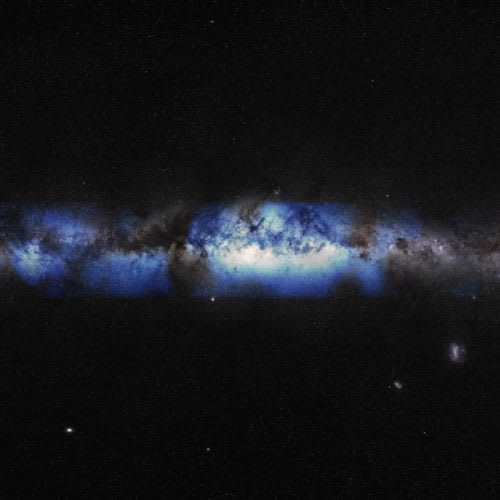Unravelling the Neutrino Mystery: The Key to the Universe's Missing Antimatter?
 The Tech Times
The Tech Times
In the vast and enigmatic universe, the neutrino—a particle so elusive that it passes through matter almost undetectably—might hold the secrets to one of the most profound mysteries of the cosmos: the missing antimatter. Recent scientific endeavors are beginning to zero in on these ghostly particles, promising insights that could potentially reshape our understanding of the universe's fundamental structure.
The Neutrino Enigma
Neutrinos are notoriously difficult to study due to their weak interaction with matter. They are one of the most abundant particles in the universe, yet their presence is almost ghost-like, slipping through our world with barely a trace. However, despite their elusive nature, scientists believe neutrinos could play a crucial role in explaining why the universe is composed primarily of matter rather than antimatter.
The question of why our universe is dominated by matter over antimatter is a puzzle that has confounded physicists for decades. According to the Big Bang theory, the universe should have begun with equal amounts of matter and antimatter. When these two meet, they annihilate each other, theoretically leaving a universe devoid of matter. Yet, here we are, living in a universe rich with stars, planets, and life.
Historical Context: A Journey Through Time
The quest to understand neutrinos dates back to the early 20th century. It all began with Wolfgang Pauli's proposal in 1930 of a "desperate remedy" to address the problem of missing energy during beta decay. Enrico Fermi further developed this idea, naming the particle "neutrino" (Italian for "little neutral one"). Subsequent experiments throughout the mid-20th century confirmed the neutrino's existence, but their properties remained shrouded in mystery.
Fast forward to the late 20th and early 21st centuries, where neutrino physics has become a vibrant field of research. Major experiments, such as those conducted at CERN and the Super-Kamiokande in Japan, have brought us closer to understanding these particles. However, the role of neutrinos in the matter-antimatter imbalance remains one of the most tantalizing questions in modern physics.
The Path Forward: New Experiments and Theories
Today, cutting-edge experiments are delving deeper into the properties of neutrinos to uncover their potential role in the universe's matter dominance. Researchers are particularly interested in the concept of neutrino oscillations, where neutrinos switch between different types or "flavors" as they travel. This peculiar behavior might hold clues to why matter prevailed over antimatter.
Furthermore, scientists are exploring the possibility that neutrinos could be their own antiparticles. If proven, this could mean that neutrinos played a critical role in the early universe, leading to a slight excess of matter over antimatter. This theory, known as leptogenesis, offers a compelling explanation for the current state of the universe.
A Compelling Conclusion
The search for answers about the universe's missing antimatter is a testament to human curiosity and the relentless pursuit of knowledge. Neutrinos, with all their mystery, may yet unlock the secrets of our cosmic origins. As new experiments push the boundaries of what we know, we inch closer to solving one of the greatest puzzles of all time.
In the grand tapestry of the universe, neutrinos are but one thread, yet they hold the potential to reveal the intricate patterns that shape our reality. The journey of discovery continues, driven by the hope that one day, we will fully understand the universe and our place within it.
Source: How a mysterious particle could explain the Universe’s missing antimatter
Subscribe to my newsletter
Read articles from The Tech Times directly inside your inbox. Subscribe to the newsletter, and don't miss out.
Written by
